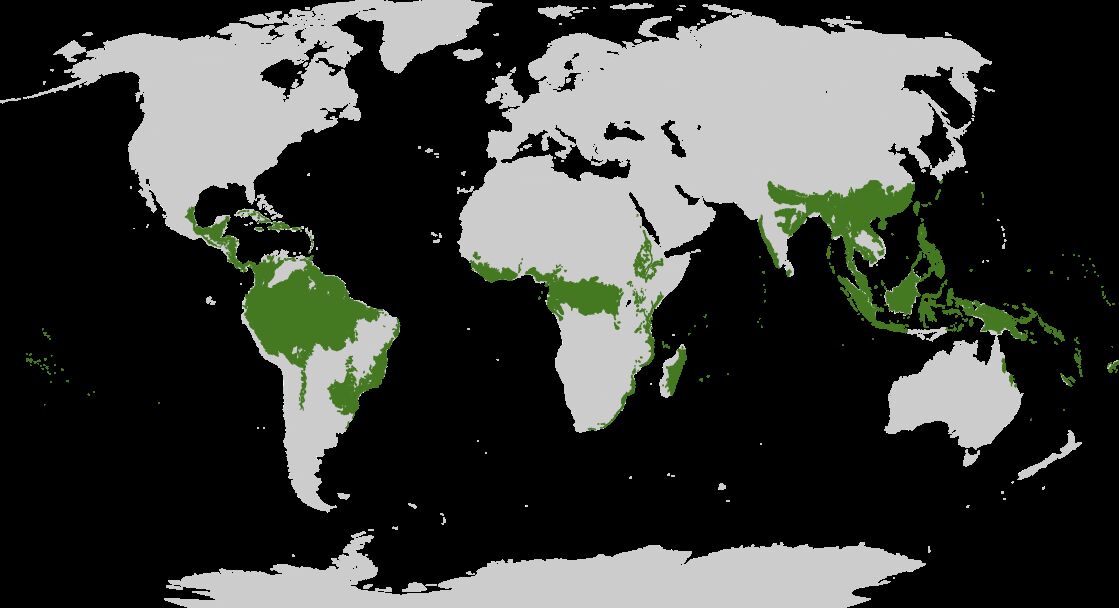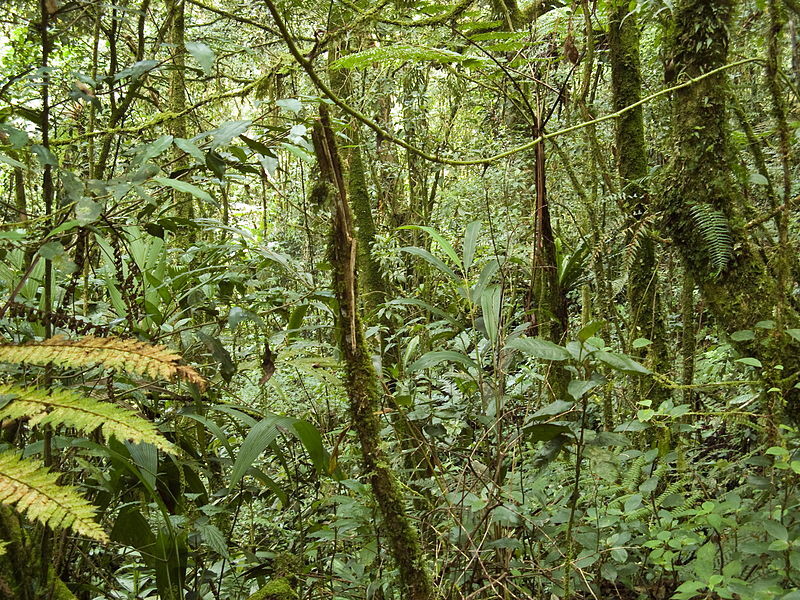A terrestrial biome is a large community of living organisms that occupy a continental climate zone.
Terrestrial biomes are characterized by their climate, especially the temperature and the amount of precipitation. The climate then determines which plant species are able to populate an environment. This in turn influences which animal species are able to inhabit the same environment.
There are many terrestrial biomes across the continents, though their quantities vary depending on which characteristics are used to describe them. Seven general groups of terrestrial biomes have been identified:
-
Geographic location: Large ring around the Arctic Circle that occupies over eight million square kilometres in size, or |6\%| percent of the land surface
-
Climate: Very cold temperatures that slow the growth of plants and the decomposition of organic matter
-
Flora: Moss, lichens, grasses, stunted shrubs, etc.
-
Fauna: Species adapted to the cold (musk oxen, Arctic foxes, polar bears, etc.), many migrating animals go there to breed (caribou, snowy owls, snow geese, etc.)
-
Other characteristics: Develops on permafrost and is covered by snow for almost 11 months of the year
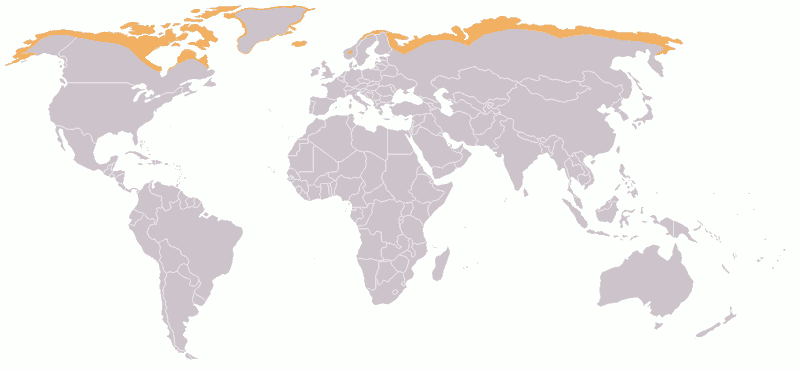
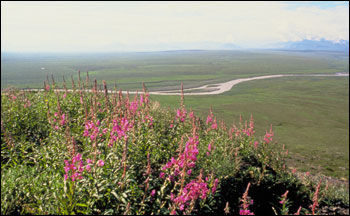
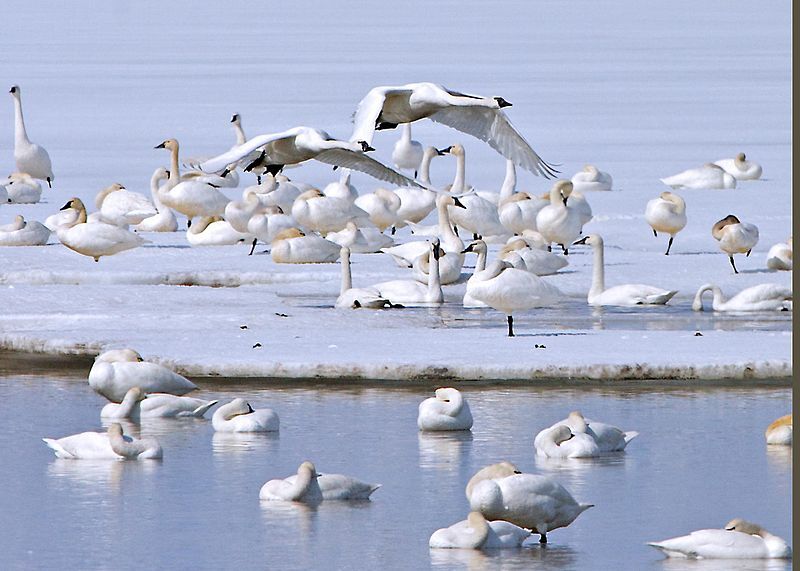
-
Geographic location: Located south of the tundra, in North America (Canada, Alaska) and in Eurasia (Siberia, Scandinavia)
-
Climate: Very long, cold and snowy winters; short and fairly warm summers
-
Flora: Coniferous forest (spruce and fir), a few deciduous trees (alder, birch, poplar)
-
Fauna: Many species of mammals, from small rodents (squirrels, chipmunks) to large herbivores (moose, caribou) and carnivores (foxes, lynx, wolves, bears)
-
Other characteristics: Accounts for over |25\%| of the planet’s forests
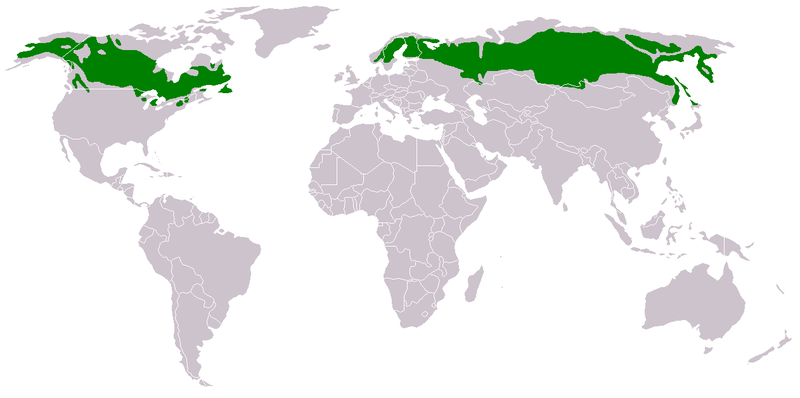
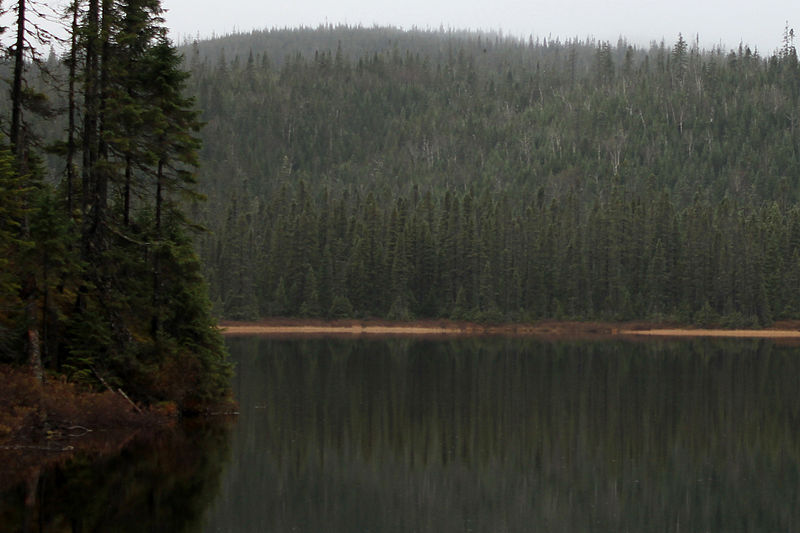

-
Geographic location: Mostly found in the Northern Hemisphere
-
Climate: Contrasting seasons with significant precipitation in the form of rain or snow; relatively mild and humid winters and fairly hot summers
-
Flora: Forest composed mainly of deciduous trees (birch, oak, poplar, maple, etc.); several layers of vegetation, including herbaceous plants and ferns that grow close to the ground, as well as shrubs and trees that grow higher and drop their leaves in the fall each year, covering the forest floor in abundant organic matter
-
Fauna: Many species of herbivorous mammals, insects and birds
-
Other characteristics: The area between the boreal forest and the temperate forest, which includes both deciduous and coniferous trees, is called a mixed forest; temperate forests are located on land ideal for farming and have often been transformed for agricultural purposes or urban development
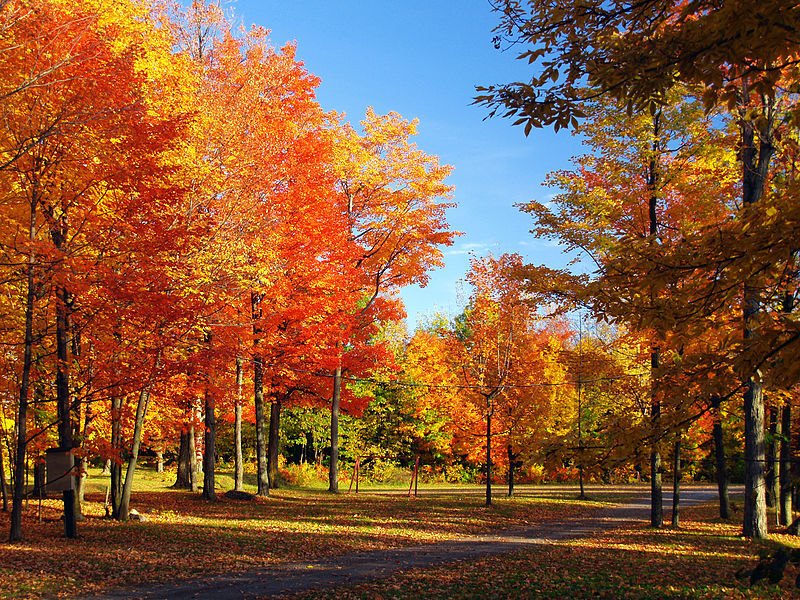
-
Geographic location: Found in middle latitudes in North America, South America and Eurasia
-
Climate: Long cold winters and summers marked by periods of drought
-
Flora: Mainly flowering plants; trees and shrubs are rare because of the low rainfall
-
Fauna: Large herbivores (bison, antelope, deer, etc.)
-
Other characteristics: Rich, fertile soil that regenerates quickly after a drought or fire with many grasslands having been turned into farmland for growing grain or raising livestock
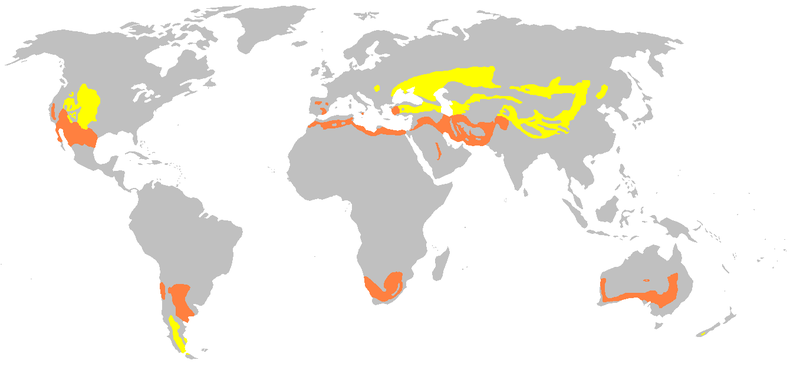
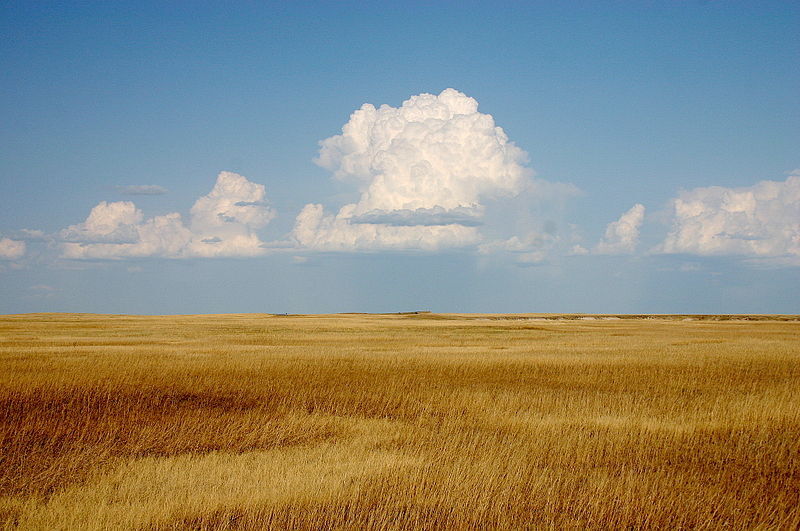
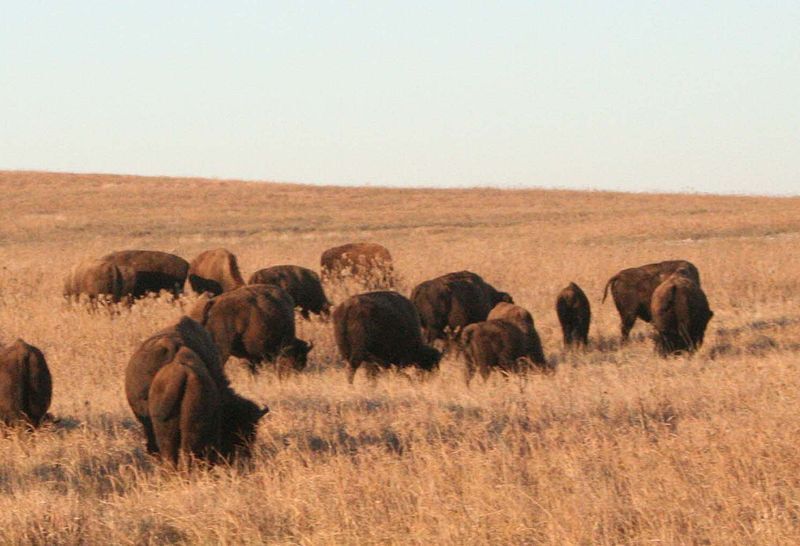
-
Geographic location: Vast semi-arid plains located in the intertropical zone, in Africa, Central America and Australia
-
Climate: Highly variable rainfall throughout the year; marked by wet and dry seasons
-
Flora: Trees and shrubs (acacias, baobabs, eucalyptus, etc.) scattered across the land
-
Fauna: Diverse animal species (ostriches, antelopes, giraffes, lions, hyenas, etc.); some species migrate to other areas during the dry season
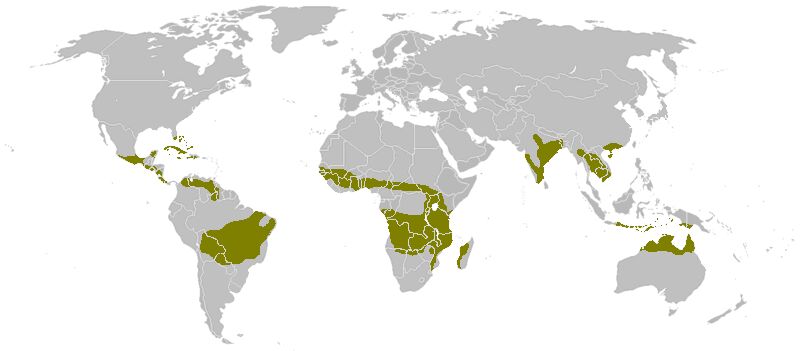
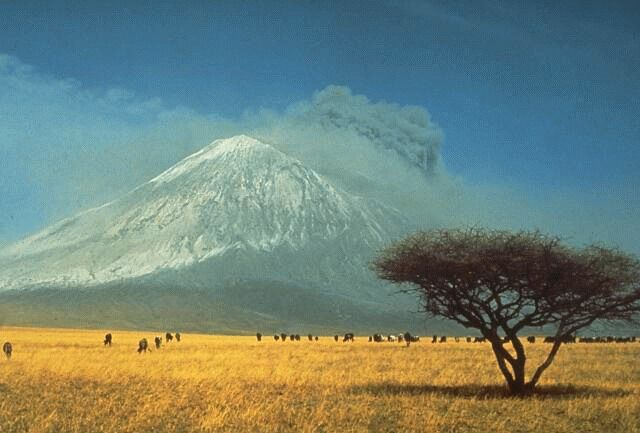
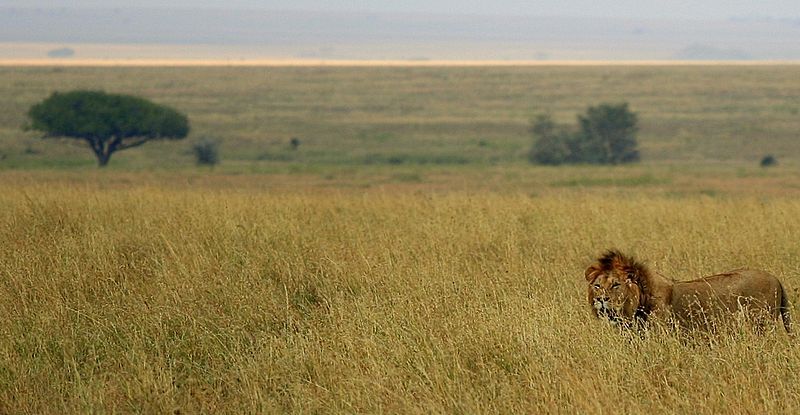
-
Geographic location: Large hot deserts located along the tropics (the Sahara in Africa and the Great Sandy Desert in Australia); cold desert regions located north and south of the intertropical zone (the Gobi Desert in Asia and the Mojave Desert in the USA)
-
Climate: Highly fluctuating daily temperatures; very hot days and very cold nights with very little precipitation
-
Flora: Adapted to drought and scattered according to the amount of available water, the strength of the wind and the type of soil; low vegetation with very deep and developed roots, sparse or thorny foliage and fleshy stems that can store water (cactus, yucca, etc.)
-
Fauna: Adapted to desert conditions with a light skin or coat pigmentation and nocturnal or subterranean lifestyle (scorpions, insects, lizards, snakes, flightless birds, rodents, camels, antelopes, etc.)
-
Other characteristics: Arid environment where living organisms are rare due to the poor soil and lack of rainfall
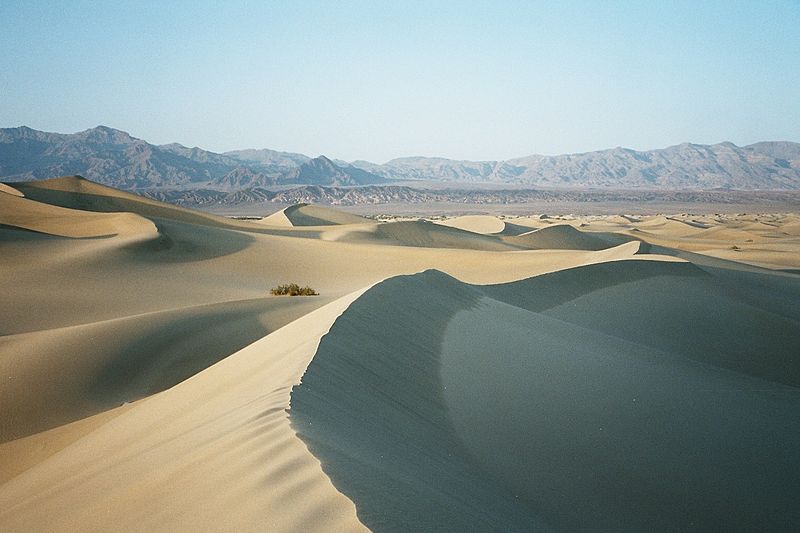
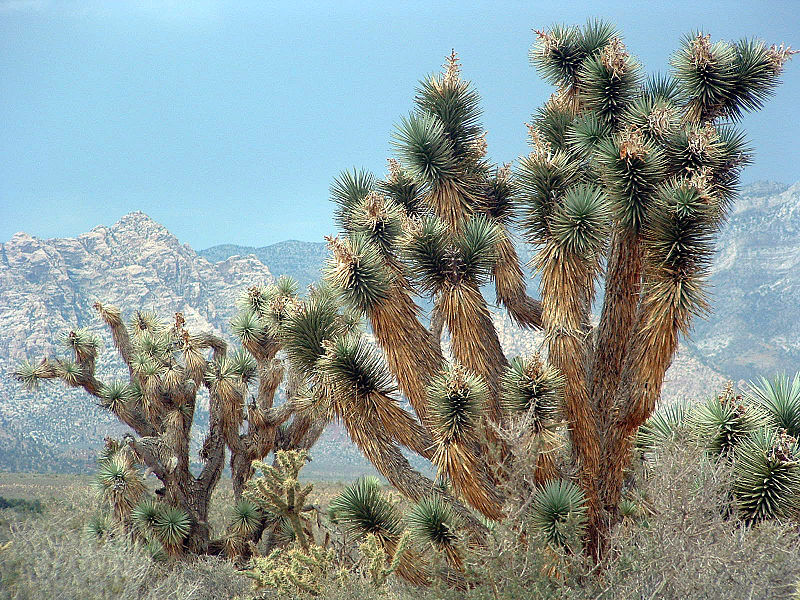
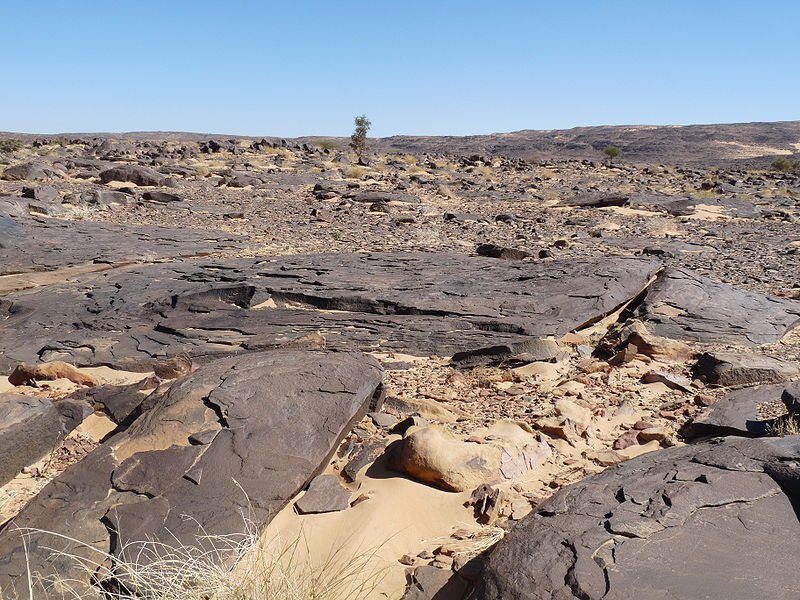
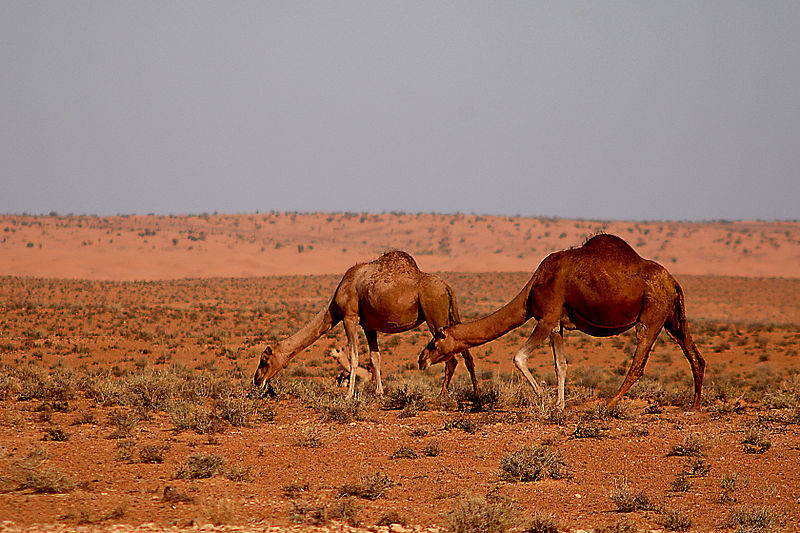
-
Geographic location: Runs along the intertropical zone near the equator; Amazon rainforest and Guyana’s rainforest in South America, large rainforests in Southeast Asia and equatorial Africa
-
Climate: Warm and consistent temperature, on average between |25| and |30\ ^{\circ}\text {C}| throughout the year, with abundant rainfall
-
Flora: Very strong competition for light among plants; dense and layered vegetation (orchids, aerial plants, lianas, trees, etc.)
-
Fauna: Many insects, reptiles (snakes, lizards), amphibians (frogs), mammals (sloths, tapirs, peccaries, monkeys, pumas, tigers); significant diversity among bird species (hummingbirds, parrots, toucans)
-
Other characteristics: Home to over half of all known species, harbouring the greatest diversity of animal and plant life on the planet; extremely high biodiversity with up to 150 different tree species per square kilometre of forest
